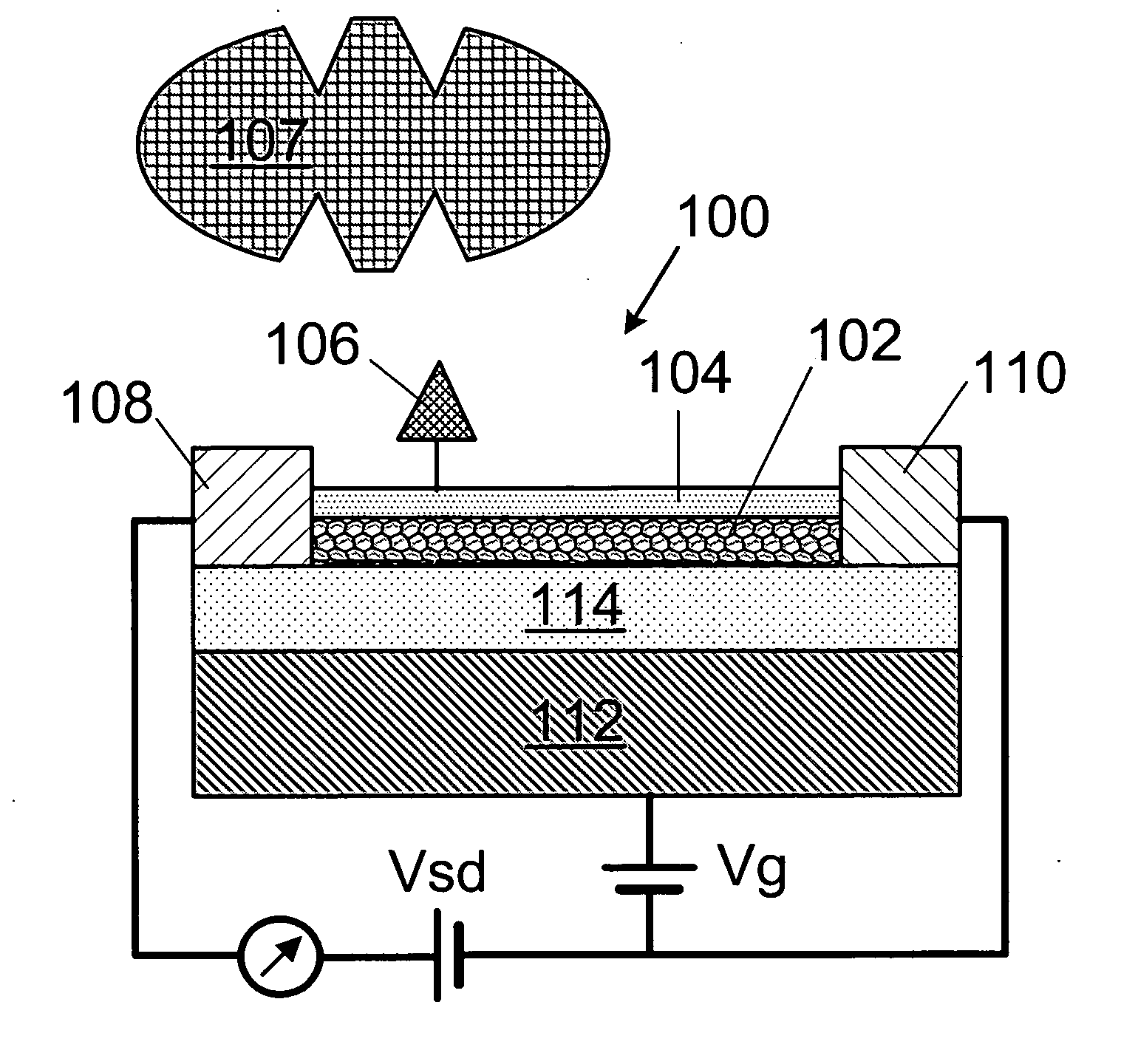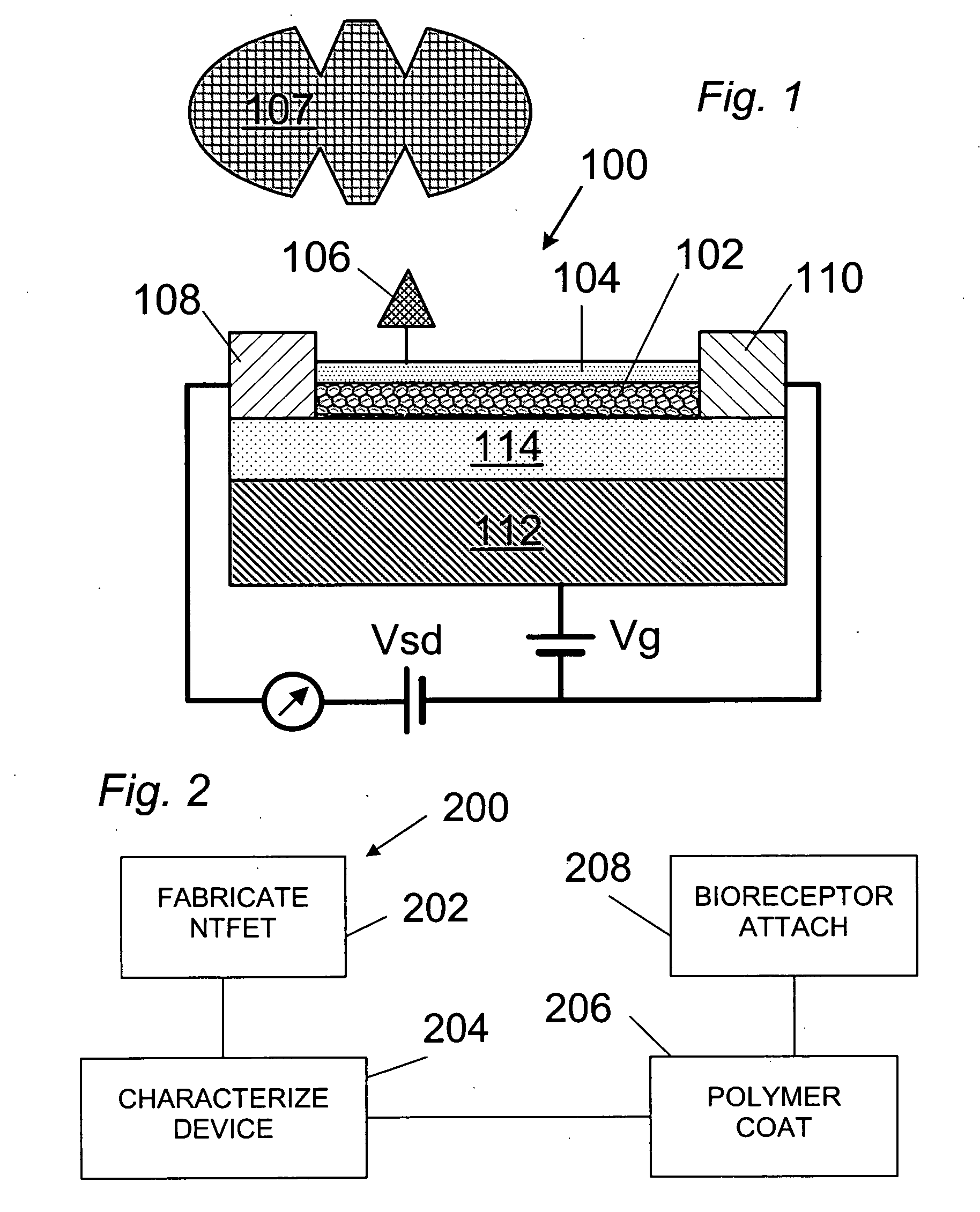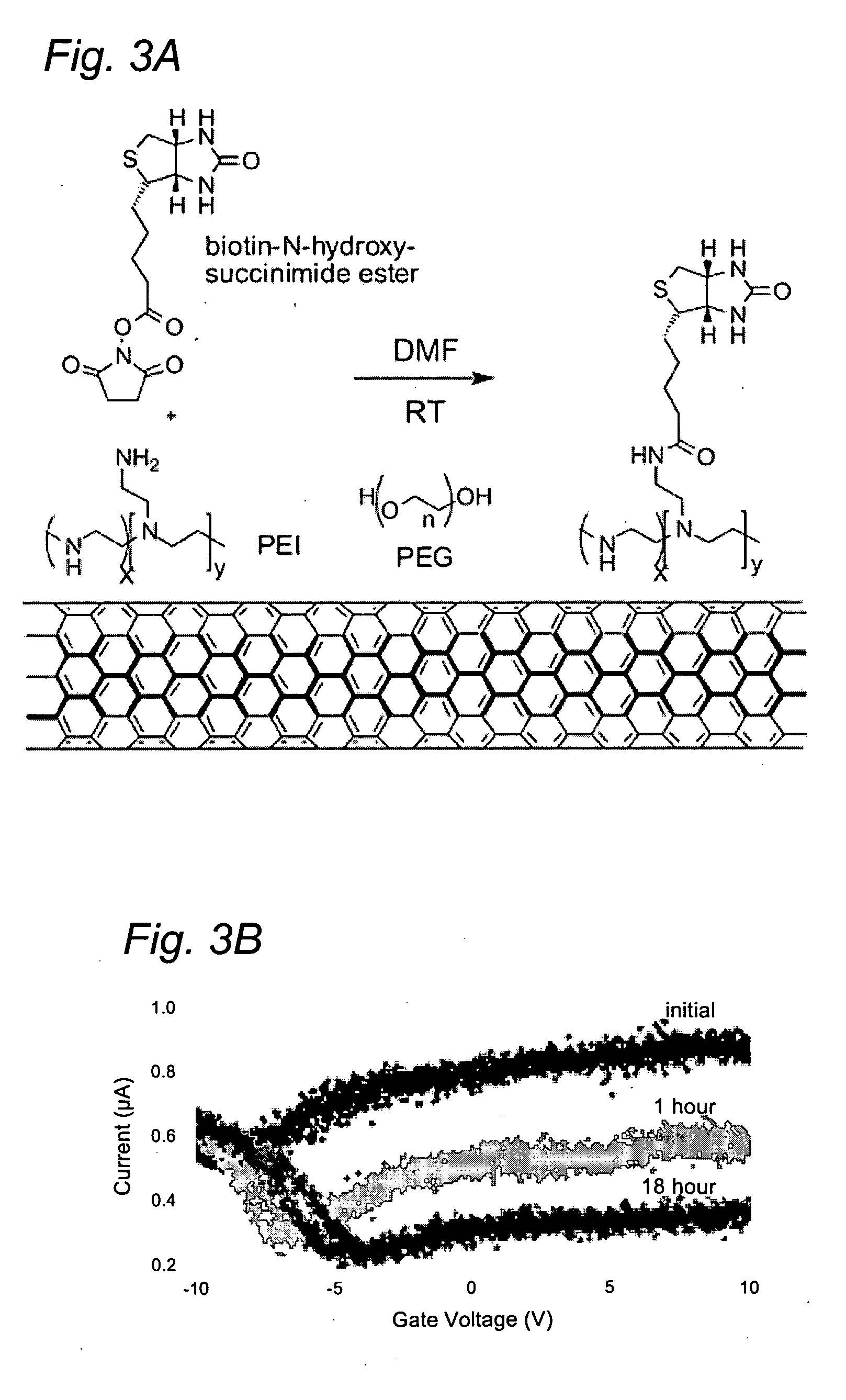System and method for electronic sensing of biomolecules
a biomolecule and electronic sensing technology, applied in nanoinformatics, instruments, laboratories, etc., can solve the problems of non-reactive to large biomolecules, and achieve the effect of reducing or eliminating non-specific binding
- Summary
- Abstract
- Description
- Claims
- Application Information
AI Technical Summary
Benefits of technology
Problems solved by technology
Method used
Image
Examples
Embodiment Construction
[0045] The present invention provides a nanotube sensor to selectively sense biological molecules, that overcomes the limitations of the prior art. These advancements have been demonstrated by a nanotube sensor according to the invention, which has been shown to be selectively sensitive to the well-characterized ligand-receptor binding of biotin-streptavidin.
[0046] In general, the invention provides a sensor architecture that allows the detection of protein-protein interactions, and also reduces or eliminates non-specific binding. In an embodiment of the invention, an inherently hydrophobic NT-FET, covered with a polymer coating layer with hydrophilic properties, is used as a transducer. The hydrophilicity of the polymer layer reduces the affinity of nanotubes towards non-specific protein binding, which is favored by a hydrophobic environment. In the exemplary embodiment detailed below, biotin is covalently attached to the polymer. When in use, the attached biotin binds with the co...
PUM
| Property | Measurement | Unit |
|---|---|---|
| gate voltage | aaaaa | aaaaa |
| length | aaaaa | aaaaa |
| length | aaaaa | aaaaa |
Abstract
Description
Claims
Application Information
 Login to View More
Login to View More - R&D
- Intellectual Property
- Life Sciences
- Materials
- Tech Scout
- Unparalleled Data Quality
- Higher Quality Content
- 60% Fewer Hallucinations
Browse by: Latest US Patents, China's latest patents, Technical Efficacy Thesaurus, Application Domain, Technology Topic, Popular Technical Reports.
© 2025 PatSnap. All rights reserved.Legal|Privacy policy|Modern Slavery Act Transparency Statement|Sitemap|About US| Contact US: help@patsnap.com



